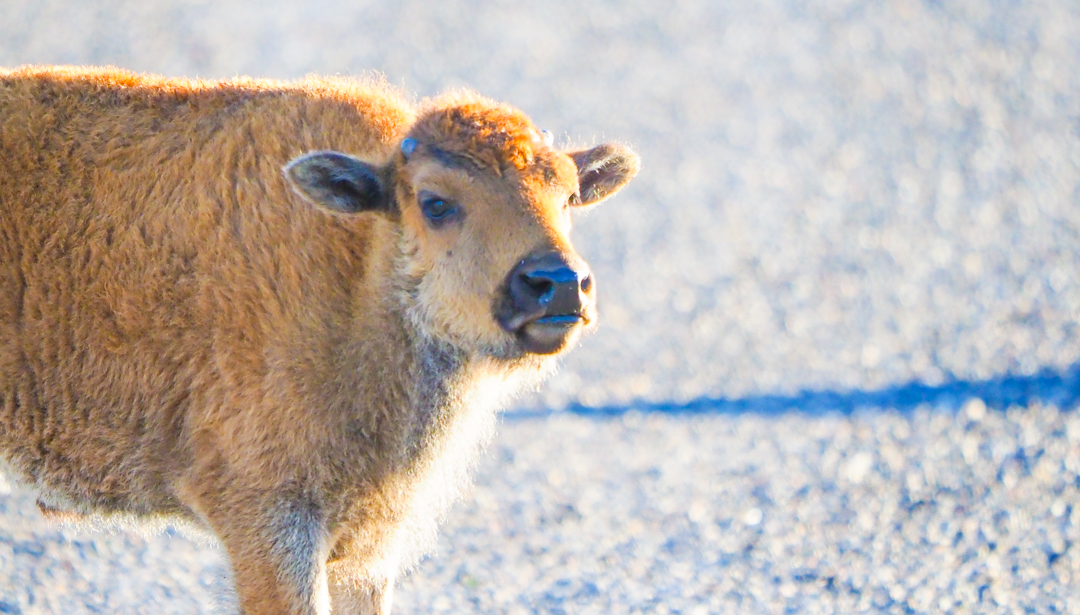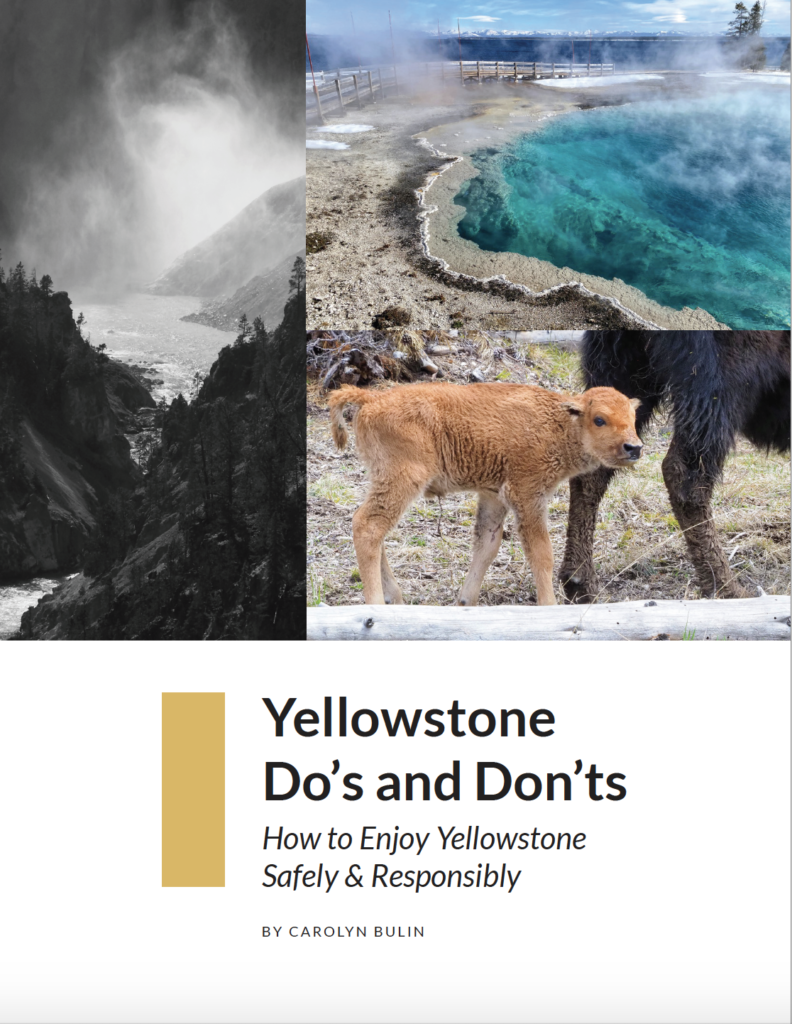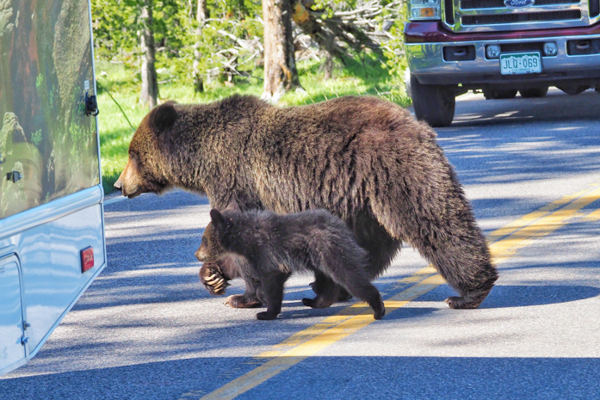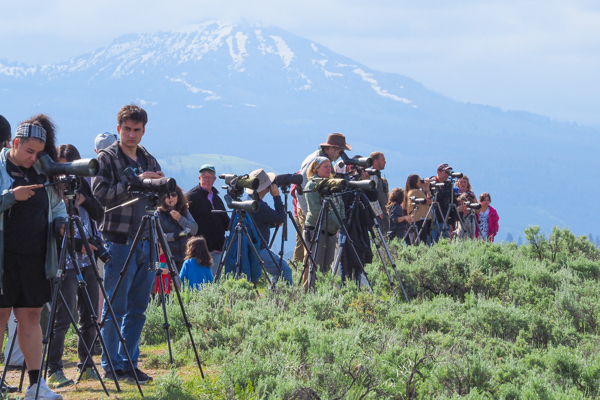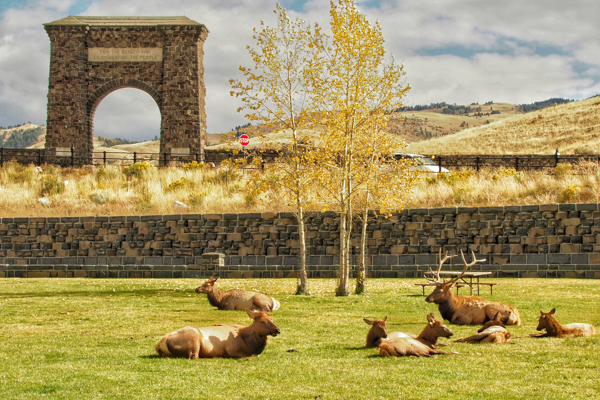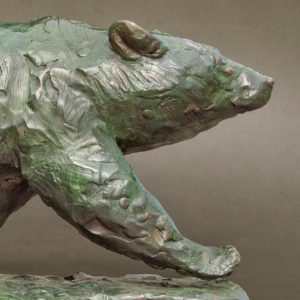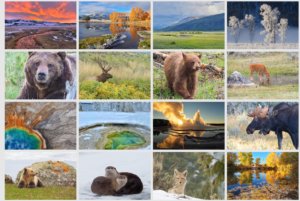Yellowstone National Park – the world’s first national park – was established on March 1, 1872, “for the benefit and enjoyment of the people.” That means the park belongs to all of us for us to explore and enjoy. So, since the park is for the people, that means you can do anything you want, right?
Not so fast! Animals and people live here, so please be respectful. After all, how would you like it if 4 million people (that’s roughly how many visits Yellowstone experiences each year) descended on your backyard, invaded your privacy, terrorized your pets, ruined your lawn or favorite garden, and left a wake of trash and human waste on your doorstep? That’s akin to the behavior of many visitors to Yellowstone.
Not only is this behavior damaging to the park and to other visitors’ experiences, it can also be dangerous: Yellowstone has plenty of boiling water, acidic mud, wild animals, and other dangers that can be deadly to those who don’t follow the rules.
Here’s what to do and what NOT to do in Yellowstone to safely enjoy your visit to the park while ensuring that other visitors – now and for generations to come – can do the same.
RESPECT YELLOWSTONE’S WILDLIFE
Maintain safe, legal, and ethical distances from wildlife to protect yourself and the animals you came here to see.
- Yellowstone visitors are injured by bison and other large animals every year. Even docile-looking animals such as bison and elk can move quickly and can be dangerous.
- Park regulations require that visitors maintain at least 100 yards (91 meters) from wolves and bears and at least 25 yards (23 meters) from all other wildlife, and that visitors do not impact animals’ behavior. These regulations are in place to protect you, the animals, and future visitors – please obey them!
- It’s your responsibility to maintain the legal distance, which means if an animal is moving toward you it’s your job to yield.
- Remember: if an animal is paying attention to you or if you are otherwise impacting its behavior, you’re too close – even if you’re farther than 25 yards (or 100 yards, depending on species); move back to give the animal additional space.
- Bring (or rent) high-powered optics and camera lenses so you can enjoy (and photograph) animals from a safe, legal, and ethical distance. Trying to take selfies with wildlife, photograph wildlife with a cell phone or point-and-shoot camera, or view wildlife without proper optics often entices visitors to get closer than they should – a dangerous situation for you, the animal, and future visitors.
- Occasionally we’ll get the question, “Why must I maintain at least 100 yards from wolves (or bears) if the animal doesn’t seem to be bothered by my presence?” If an animal becomes too comfortable being close to people (called habituation), the likelihood increases of that animal being injured or killed by an automobile, becoming aggressive toward people (possibly injuring a visitor and subsequently being dispatched by park rangers to protect future visitors), or being killed during legal hunting seasons outside the park’s boundaries. Please protect animals by respecting their space, no matter how tempting it is to experience them close-up.
Be bear aware. Carry bear spray and know how to use it – even in high-traffic areas.
- While bear attacks in Yellowstone are rare, they do occur, and they put people and bears at risk of injury or death. People have been killed by bears in Yellowstone, and bears who have killed people have had to be lethally removed by park rangers to mitigate the risk of future bear attacks.
- Protect yourself and the bears by being bear aware: Reduce the risk of a bear encounter by hiking during daylight hours (rather than at night), hiking in groups of 3 or more, being alert, and making noise to avoid surprising a bear. Carry bear spray (a mace-like pepper spray) to deter an attack in the event of an encounter.
- Bear encounters may occur in surprisingly developed areas; carry bear spray on all walks and hikes (no matter how short or how popular the trail or boardwalk is).
- Repeated studies have shown that bear spray is more effective than a firearm at stopping a bear attack (and bear spray causes no lasting damage to the bear). Be sure to get spray that is designed and advertised as bear spray, not self-defense mace (which isn’t strong enough or sold in large enough quantities to be effective against a charging bear). Bear spray rentals are available in the park.
Don’t feed the wildlife – intentionally or accidentally.
- Most human food isn’t good for wildlife; it doesn’t have the nutrients they need to fuel their metabolism or help them store energy to make it through Yellowstone’s long, cold winters, potentially causing an animal to starve to death despite an abundance of free scraps.
- Animals that obtain human food may start to associate people with food (called food-conditioning). At best, this may result in undernourished animals (see above). At worst, it could lead to injured humans when animals try to obtain food from park visitors, and food-conditioned animals may have to be lethally removed by park rangers to protect visitors.
- Protect your food: Don’t intentionally give hand-outs to critters of any size, and keep an eye on any bag (such as a daypack) that contains food to make sure animals don’t sniff out your snacks. When camping or backpacking, keep a clean camp and store food properly.
Control and protect your pets.
- Yellowstone is a wild place with wild animals that could injure or kill your pet; smaller wildlife may be stressed out by the presence of pets, and pets can transmit non-native and dangerous diseases to native wildlife. Dogs have died in hydrothermal areas when they have left the boardwalk and jumped into boiling hot springs.
- Protect your pet and the park by obeying park regulations: Pets must remain in developed areas (within 100 feet/30 meters of roads, parking areas, and campgrounds) and must be physically controlled at all times (in a car, in a crate, or on a 6-foot leash). They are not allowed on boardwalks, in thermal areas, or on hiking trails, and they may not be left unattended (such as tied to an object). They may be left in a vehicle for short periods of time if basic needs (water, food, shade, ventilation, etc.) are met, but this is not recommended.
- If you must bring your pet with you when you travel, consider boarding your pet at a facility in a gateway community while you’re visiting.
- Qualified service animals assisting people with disabilities are allowed throughout the park and must be leashed. Emotional support animals or therapy animals are not considered to be qualified service animals and are subject to the standard park regulations outlined above.
Obey speed limits.
- The speed limit in the park never exceeds 45 mph (73 km/h) and is often slower, and for good reason: Yellowstone’s roads are narrow and winding, and wildlife – even large animals such as bison – can be hard to see until it’s too late to stop. Vehicle accidents are the most common cause of injury for park visitors, and more than 70 large animals are killed on the park’s roadways each year.
- To protect wildlife, yourself, and your vehicle, obey the speed limit. Plan plenty of extra time to reach your destination, allowing for the leisurely speed limit, wildlife-caused traffic jams, and other unexpected delays.
RESPECT OTHER VISITORS IN YELLOWSTONE
Use roadside pullouts for stopping and to let faster traffic pass – don’t stop in the roadway.
- There’s a lot to see in Yellowstone! You may find yourself either intentionally or distractedly driving well below the posted speed limit so you don’t miss anything. Let faster traffic pass by using pullouts, as Yellowstone’s roads are not conducive to safely passing slower traffic.
- When you see something you’d like to stop for, such as a massive bison or a frolicking bear, pull safely and completely off the roadway rather than stopping in the lane of travel. Besides being frustrating for visitors and park residents who have different priorities for their time in Yellowstone, vehicles blocking the lane of travel can prevent rangers and emergency personnel from responding to critical situations, putting everyone at risk. Plus, if you pull completely off the road when you stop, you’ll be able to enjoy the sighting instead of having your experience interrupted by a ranger requesting that you move your vehicle.
- When pulling off the road to stop, remember that Yellowstone’s roads are narrow; leaving a tire or side mirror over the white line in the lane of travel by even a few inches can prevent large vehicles from passing safely, effectively reducing the road to one lane of travel and creating traffic mayhem. Please remember to pull completely off the roadway.
- A “bear jam” or “bison jam” (traffic jams caused by these animals) is a quintessential Yellowstone experience. Help make it safe and enjoyable for everyone by following the guidelines above and listening to the ranger(s) on-scene; it’s their job to make sure you get the best view possible while protecting the animals(s) and all visitors.
Enjoy silence, and allow other visitors to do the same.
- True, there’s a lot of commotion around Yellowstone’s busier attractions such as Old Faithful and the main viewpoints of the Grand Canyon of the Yellowstone, but there are also ample opportunities to enjoy the silence of wilderness.
- Listen to the sounds of Yellowstone’s magic (bubbling mud pots, spouting geysers, howling wolves, or bellowing bison). Respect other visitors’ desire for peace and quiet in these less-chaotic settings by keeping your voice down (unless you’re trying to avoid surprising a bear while hiking), silencing your cell phone, and turning off your music.
- Turn off your vehicle’s engine when you stop to view wildlife. Idling engines are frustrating to those who are trying to listen to the sounds of nature and may have a negative impact on the animals you are trying to observe.
- Remember that sound often carries farther than you might think, especially through open valleys or over water.
Observe personal space.
- Yellowstone’s boardwalks can get crowded. Do your best to give other visitors space and keep a clear path for others to pass when you stop to enjoy the sights.
- Wildlife such as wolves and bears are often best viewed with high-powered spotting scopes. If you don’t have your own, other generous visitors may offer to let you look through theirs (although this is less common in the midst of a pandemic). Keep in mind, however, that those generous visitors either purchased their scopes or paid to rent them so they and their families could enjoy Yellowstone’s wildlife; sharing a peek with one visitor may not seem like a big deal, but sharing with a stream of visitors may mean that the scope’s owners miss out on the experience. Let them offer a peek instead of asking if you can look, and recognize their generosity with a thank-you.
RESPECT THE PARK
Leave what you find.
- This Leave No Trace principle is not just ethics; in Yellowstone, it’s the law. Removing anything (wildflowers, antlers, bison fur, rocks, or any other natural or cultural items) from the park is illegal.
- When you find something cool, take a picture of it or whip out your sketchbook and draw it, and then please replace it for the next person to discover.
Stay on boardwalks and trails in thermal areas.
- Traveling off-trail in thermal areas is illegal, and for good reason: The mineral crust can be razor-thin, with scalding water just below the surface. More than 20 people have died in Yellowstone’s thermal features, many of them due to carelessly ignoring this important park regulation.
- Similarly, remember that your finger is not a thermometer for testing hot water in the thermal areas. You can’t always tell how hot – or how acidic – the water is just by looking, and many park visitors have received nasty burns by dipping a finger to test the waters. If you must know how hot the water is, consider purchasing a no-contact laser thermometer.
Pack it in, pack it out.
- Use the provided, bear-resistant receptacles for trash and recycling. If they’re full, please find another, or pack your waste out with you, as leaving garbage or recycling next to or pouring out of a full bin invites opportunists such as ravens and bears, which may then come to rely on human food. Bears that gain access to human food must be lethally removed.
- Restroom facilities are abundant throughout the park. However, if you feel the urge while you’re not near a facility or are in the backcountry, find a place at least 25 feet from trails and water sources for liquid waste. For solid waste, find a place at least 200 feet from trails and water sources and dig a hole 6-8 inches deep. Waste may be buried in the hole, but pack out your toilet paper – don’t bury it or hide it under a rock – as it will take up to three years to decompose and will likely be exposed by animals for other visitors to find.
If you smoke, do so responsibly.
- Smoking is not permitted in thermal areas because sparks and cigarette butts can ignite natural sulfur deposits.
- Fully extinguish and pack out your butts. Yellowstone’s dry climate creates a recipe for forest fires – an important natural element of the ecosystem, but not one that people need to introduce through a carelessly-tossed cigarette butt as happened in 1988.
Follow all park rules and regulations.
Following all the rules might seem daunting, and perhaps you’re wondering how you’ll ever have a good time while trying to keep track of all these regulations. Rest assured, following the rules is easy to do: read the park newspaper you receive when you enter the park, pay attention to signs along the way, and follow the tips outlined above. If you do, you’ll have the experience of a lifetime without ruining someone else’s day – and you’ll help to protect the magic of Wonderland for many generations to come. Thank you!
Need help planning your trip? Book a Yellowstone Trip Planning session with our favorite guide partners.
Carolyn Bulin has been sharing her passion for the Greater Yellowstone Ecosystem for over a decade. As a naturalist and certified trainer of interpretive guides, she enjoys leading field classes and teaching others the art and science of guiding. When not teaching or writing, she can be found exploring the park with her husband and daughter.
Photos © Jenny Golding

